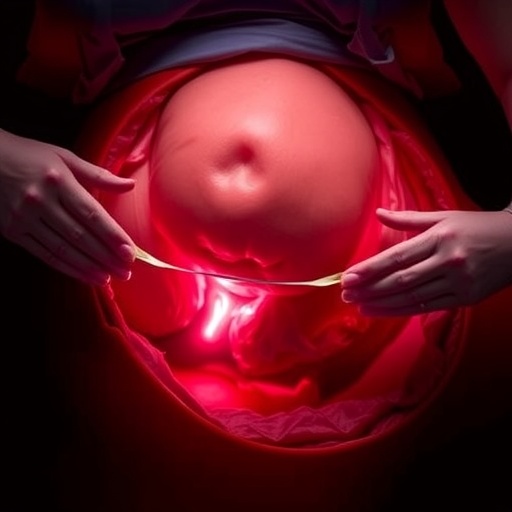Penn Medicine pilot finds increased job fulfillment, decreased burnout for critical care physicians working seven- versus 14-day rotations
PHILADELPHIA – Shortening the length of rotations in a medical intensive care unit (MICU) from the traditional 14-consecutive day schedule to only seven days helps mitigate burnout among critical care physicians, according to a new Penn Medicine pilot study. The study, published today in the American Journal of Respiratory and Critical Care Medicine, is the first to validate the efficacy of a truncated rotation in reducing the rate of burnout among critical care physicians.
The team found the shorter rotations not only led to lower burnout rates – by as much as 41 percent – but the change also resulted in increased job fulfillment.
“In critical care medicine, periods of extreme stress can contribute to high burnout. Our study shows that organizations can implement new strategies, such as shorter staffing rotations, that have a real impact on burnout rates and job fulfillment,” said the study’s lead author, Mark E. Mikkelsen, MD, MSCE, chief of Medical Critical Care and an associate professor of Medicine. “Based on our findings, we changed our scheduling approach to limit the number of consecutive days per rotation, and ensure adequate non-clinical time between rotations.”
Work-related burnout, characterized by emotional or physical exhaustion as well as feeling cynical or detached, is common among physicians – particularly, intensivists, or critical care physicians, who care for critically ill patients. Recent research shows nearly half of the 10,000 critical care physicians practicing in the United States reported symptoms of severe burnout, which can lead to compassion fatigue, decreased quality of care and job turnover.
In May 2018, Penn Medicine launched a pilot initiative across four critical care rotations, spanning the Hospital of the University of Pennsylvania (HUP) and Penn Presbyterian Medical Center, to identify effective strategies to mitigate burnout and maximize fulfillment. The team, who had found high rates of burnout among intensivists at the end of 14-day rotations, tested a strategy proposed by the Critical Care Societies Collaborative that called for limiting the maximum number of days worked consecutively.
As a part of the pilot, intensivists in one unit, the Founders 9 MICU at HUP, had the option to attend for the traditional 14-day rotation or change their schedule to a seven-day rotation. Rotations in two other units were capped at seven consecutive days, while intensivists in the fourth unit worked a two-week rotation, with one weekend off.
From May 2018 to February 2019, the team administered more than 180 surveys to 29 physicians at different points throughout the rotations, including on day seven of a 14-day rotation and between clinical rotations. They found burnout and fulfillment varied by the clinical rotation and length of rotation. For example, intensivists in in the Founders 9 MICU, a 24-bed unit staffed by two critical care physicians, fellows and internal medicine residents, responded with 61 percent burnout and 47 percent fulfillment rates. Meanwhile, the intensivists working a seven-day rotation in the Donner 3 MICU at HUP – an 8-bed unit, staffed by one critical care physician and two advanced practice providers – responded with a 24 percent burnout and 76 percent fulfillment rates.
“While our main focus was measuring burnout and fulfillment rates, we also wanted to ensure the shorter rotations did not negatively impact our ability to educate the next wave of physicians whom are training here,” said author Meeta Prasad Kerlin, MD, MSCE, an assistant professor of Medicine and associate fellowship program director in the division of Pulmonary, Allergy and Critical Care. “Based on feedback from our critical care physicians, fellows, and residents, we found the shorter rotations may have, in fact, led to better education, as faculty felt they could be more engaged and energetic.”
###
Additional Penn authors on the study include Brian J. Anderson, Lisa Bellini, William D. Schweickert and Barry D. Fuchs.
Penn Medicine is one of the world’s leading academic medical centers, dedicated to the related missions of medical education, biomedical research, and excellence in patient care. Penn Medicine consists of the Raymond and Ruth Perelman School of Medicine at the University of Pennsylvania (founded in 1765 as the nation’s first medical school) and the University of Pennsylvania Health System, which together form a $7.8 billion enterprise.
The Perelman School of Medicine has been ranked among the top medical schools in the United States for more than 20 years, according to U.S. News & World Report’s survey of research-oriented medical schools. The School is consistently among the nation’s top recipients of funding from the National Institutes of Health, with $425 million awarded in the 2018 fiscal year.
The University of Pennsylvania Health System’s patient care facilities include: the Hospital of the University of Pennsylvania and Penn Presbyterian Medical Center–which are recognized as one of the nation’s top “Honor Roll” hospitals by U.S. News & World Report–Chester County Hospital; Lancaster General Health; Penn Medicine Princeton Health; and Pennsylvania Hospital, the nation’s first hospital, founded in 1751. Additional facilities and enterprises include Good Shepherd Penn Partners, Penn Home Care and Hospice Services, Lancaster Behavioral Health Hospital, and Princeton House Behavioral Health, among others.
Penn Medicine is powered by a talented and dedicated workforce of more than 40,000 people. The organization also has alliances with top community health systems across both Southeastern Pennsylvania and Southern New Jersey, creating more options for patients no matter where they live.
Penn Medicine is committed to improving lives and health through a variety of community-based programs and activities. In fiscal year 2018, Penn Medicine provided more than $525 million to benefit our community.
Media Contact
Mike Iorfino
[email protected]




